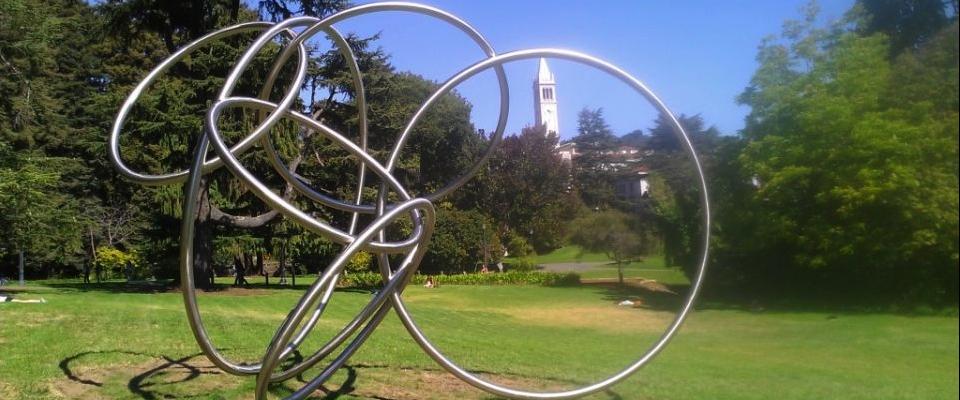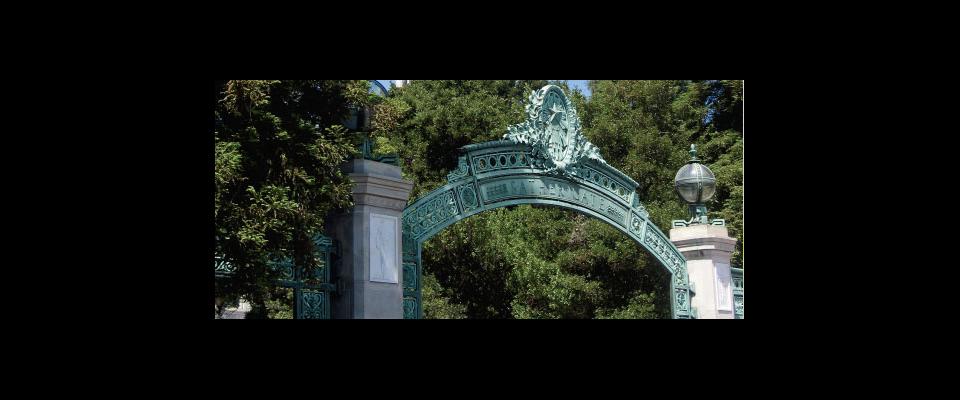Q & A with Berkeley’s Landscape Architect
From the sounds of it, Jim Horner ’71, was practically groomed to be campus landscape architect from boyhood. “I grew up in Berkeley, and I enjoyed the campus as a park when I was a child riding his bike around town. And then, as a student at Berkeley, when I decided to go into landscape architecture, I met the campus landscape architect and I thought what a cool job that was.” After stints with the forest service and the park service, Horner moved back to the Bay Area to raise a family. When he heard about the open position on campus, he applied—twice. “I got it the second time around, and have been here 12 years.”
“It’s a wonderful job,” says Horner, who points out that, in contrast to private practice where designers spend their careers moving from project to project, “here you are sort of living within your work.”
Anne Pinckard: What was the campus landscape like before the University was established?
Jim Horner: If you’ve looked at historical photographs, you’ve probably seen that the area was open fields for the most part—just grassland. And oaks, and other native trees grew near the creek, and so there were little corridors of buckeye, oak, California bay, big leaf maple. [The redwoods] have essentially naturalized along the banks of Strawberry Creek now, but they weren’t native to the campus.
AP: Why are some of the trees on campus tagged?
JH: I think you’ve noticed those on oak trees. We have one of the principle researchers of sudden oak death, Matteo Garbelotto, on campus. A group of us met—someone from the botanical garden, the Oakland arborist, the city arborist, a person from Environment, Health and Safety, Phil Cody [tree crew manager], and Matteo—and talked about the best way to approach it. We have about 600 live oaks on campus, and we ended up spraying all of them as a preventative. We ended up spraying twice, and those tags were placed on the trees to keep track of which ones have been sprayed and which ones haven’t. To the best of my knowledge, we haven’t gotten sudden oak death yet.
AP: How do you decide what to do with the campus’s trees?
JH: A lot of my work is with construction, so I’m interested in how to preserve trees around construction sites. At the Li Ka Shing project on Oxford Street they’ve fenced off the area around the trees that are to remain. More will be planted, but a few came out, partly to make way for the project, partly because they were diseased—Monterey Pines that were suffering from pine pitch canker.
We’ve moved a number of trees around campus. Just last week we moved a 60-ton coast redwood that was going to be in the way of the construction of the Student Athlete High Performance Center. It took a crane and an 18-foot-diameter root ball, and took a couple days to do the full move. But it was done in perfect weather: cold and drizzly.
AP: How do you decide what trees to plant?
JH: I look at several things: the use and where it’s located and how much water it’s going to require. Especially now, with quite possibly entering our third drought year, there’s a stronger push toward using plants that are horticulturally appropriate to this climate. We can enjoy trees from the Mediterranean region, and trees from Australia and New Zealand, which have similar climates to ours.
We have a memorial tree program on campus where people can donate and get a tree planted in memory of someone. None of the trees have plaques on them. It’s a very personal program for people who want to remember someone on campus.
AP: What are some of your favorite trees on campus?
JH: It’s like asking who’s your favorite child. It’s just not fair. It also depends on the time of year. The old gingko tree east of Giannini Hall is spectacular in November, but in the rest of the year it just sits there in the background.
The dawn redwoods are very fun because they were thought to have been lost and then were discovered by faculty, a Dr. Chaney, who went into western China in the late 1940s and brought back seeds and seedlings, and helped reestablish the tree in California. And the interesting thing about the dawn redwoods is that they are deciduous. Every year people who are unfamiliar with the tree will tell me that it is dying because it loses all its needles.




















